Book Details:
- ISBN: 9781943431540
- Genre: Children's Nonfiction: Science & Astronomy
- Page Count: 90
- Age Range: 9-12
- Pub Date: 01/07/2020
$16.95
Space facts from an astrophysicist, brought down to earth by a middle school teacher—these are answers to kids’ real, wacky, smart questions. Light, space, stars, galaxies, planets, and more, all explained with accuracy and humor, and accompanied by images from the Chandra X-ray Observatory.
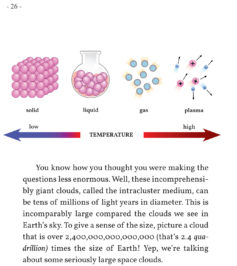
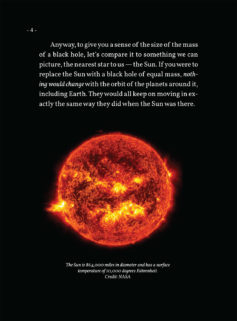
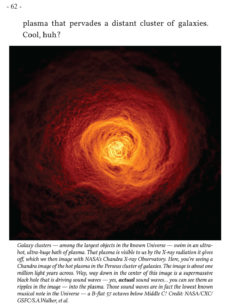
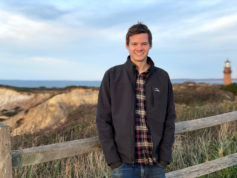
Dr. Grant Tremblay is an Astrophysicist at the Center for Astrophysics | Harvard & Smithsonian. He was previously a NASA Einstein Fellow at Yale University, a Fellow at the European Southern Observatory (ESO), and an Astronomer at ESO’s Very Large Telescope in Chile. His Doctoral Thesis work was conducted at the Space Telescope Science Institute (operations center of the Hubble Space Telescope), the Johns Hopkins University, and the Rochester Institute of Technology. He currently serves as the head of the Lynx X-ray Observatory Science Support Office at the Smithsonian Astrophysical Observatory, and supports Flight Operations for the Chandra X-ray Observatory as part of the High Resolution Camera Instrument Principal Investigator Team.
Dr. Tremblay’s research employs highly multiwavelength techniques, using data from the world’s most powerful ground- and space-based observatories to better understand star formation amid energetic feedback from supermassive black holes. His portfolio consists of more than seventy refereed publications and over $1.5M in NASA funding. He is also heavily involved in the development of future space missions, including instrumentation for a notional Europa Lander as well as Lynx, a NASA-funded Large Mission Concept study now under consideration by the 2020 Decadal Survey in Astronomy & Astrophysics.
Dr. Tremblay is the author of two books for the general public. The first, Light from the Void: Twenty Years of Discovery with NASA’s Chandra X-ray Observatory, celebrates Chandra’s two decades of discovery and will be released by Smithsonian Books on October 22, 2019. The second, Space Made Simple, is a richly illustrated children’s book to be published by Tumblehome Learning in Spring 2019. Dr. Tremblay is also a regular main cast member on the Discovery and Science Channel’s award-winning documentary series How the Universe Works and Space’s Deepest Secrets, as well as the host of a forthcoming Science Channel miniseries on black holes.
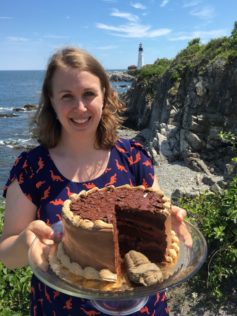
Katie Coppens lives in Maine with her husband and two children. She is an award-winning teacher who currently teaches sixth grade science and English at Falmouth Middle School. She has a range of experience from teaching self-contained third grade to teaching high school biology and English in Tanzania. Katie’s goal is to write books that encourage kids to ask questions and have fun while learning. Katie has multiple publications, including a teacher’s guide for the National Science Teaching Association entitled Creative Writing in Science: Activities That Inspire, Geology is a Piece of Cake, Geometry is as Easy as Pie, What Do Black Holes Eat For Dinner? And Other Silly, Yet Totally Smart, Questions About Space and The Acadia Files chapter book series. Katie also writes a column for NSTA’s Science Scope magazine called “Interdisciplinary Ideas”. Go to www.katiecoppens.com or follow on Twitter @Katie_Coppens for more information on her publications.
“Answers to big questions, from the titular one (answer: “Everything!”) to what happens to pee in space (“it would boil, then freeze”). The co-authors—one an astrophysicist, the other author of Geometry Is as Easy as Pie (2020)—offer chatty but cogent responses to a free-floating set of astro-queries. Along with frequent reminders that outer space is unimaginably enormous, readers will get relatively detailed lowdowns on diverse topics including black holes in general (“You’d only see this blindingly bright, white light in the fraction of a second before you were vaporized”), the nature of mass, the possibility that “rain” on planets like Jupiter is made of diamonds, space trash, Cepheid variables, the recordings on the Voyager probes, and the notion of multiple universes: “Crazy, right? But kind of cool too.” Highlighted by images of galaxies colliding in a “beautiful cosmic trainwreck” and 2019’s breakthrough photograph of a supermassive black hole, an array of well-placed space photos and digital renditions add small but evocative notes of visual wonder that complement the text’s abundant enthusiasm. The substantial text is not broken up into chapters, but text-message–shaped callout boxes presenting the questions help walk readers through the narrative, with logical related questions presented in yellow boxes. There is no backmatter beyond image credits. A tasty, digestible buffet of cosmic phenomena for readers with their eyes on the skies.”
– Kirkus Reviews